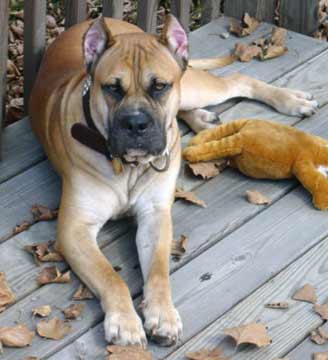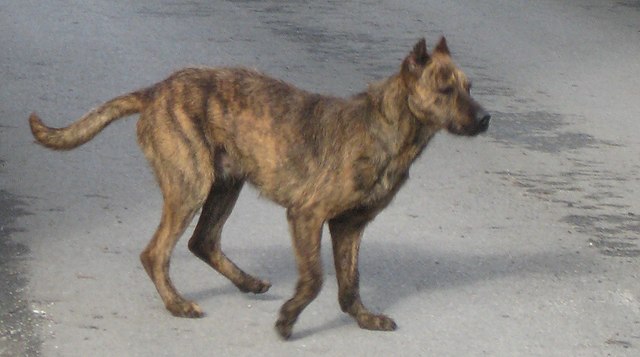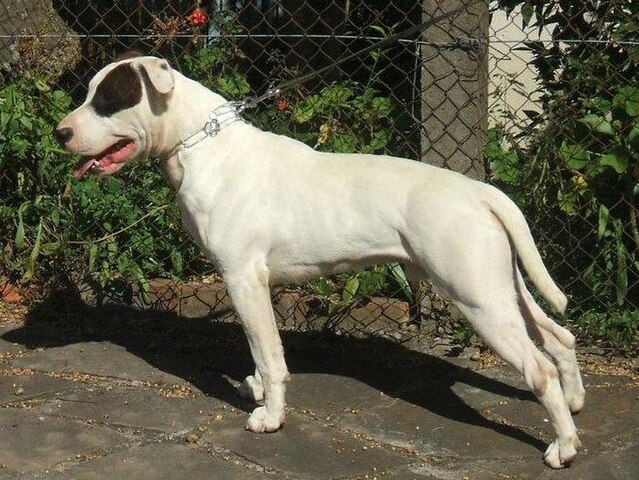The Landseer is not just a color variety of the Newfoundland breed – overseas it is a breed in itself. Also sometimes called the Landseer ECT (which stands for Eastern Continental Type), the breed originated in Germany and Switzerland as a guard dog and companion. Landseers are excellent water dogs and historically would tow nets to the shores to help their fishermen owners. Their natural swimming abilities also meant they were used in water rescue situations. This is an old breed that’s been around for hundreds of years and has been depicted in many different forms of art. The most famous painting of one was depicted by Sir Edwin Landseer in a portrait entitled “A Distinguished Member of Humane Society”. The breed was ultimately named after him.
One can tell just by looking that the Landseer is a powerful dog. Not only is he imposing in appearance, but he can be protective of his owner if he feels there is danger present. Thankfully, (when properly bred and raised correctly) he shouldn’t be outright aggressive and in fact will only use teeth as a last resort. This said he will definitely make his suspicions known to an imposing stranger! This is a reliable and confident breed that should have a stable temperament, even if slightly suspicious towards those he doesn’t know. Prospective owners should be aware that in order for the correct temperament to come to fruition, the dog must be thoroughly socialized from puppyhood onward, and that the dog must be given obedience training. Teenage dogs will likely try to “pull rank” at certain points, and an owner must keep steadfast to the household rules.
When it comes to training, the Landseer is independent-minded and may be slower to respond than other breeds, but is otherwise very smart and can be trainable. Members of the breed have been known to compete in many different dog sports including rally, draft work, obedience, agility, scentwork, coursing, barn hunt, fastcat, dock diving and water trials. They require daily mental stimulation and training for various sports is an excellent way to engage their brains. Luckily many are very motivated by food and attention! A bit of patience will still be required however, and the ability to change up the training plan on the fly. The breed can be stubborn and prone to putting their own spin on obedience commands so the trainer must be quick-thinking and good at problem solving.
The Landseer doesn’t always realize just how big he is and can accidentally knock over small children and the elderly. Although he usually loves kids, he needs to be taught rules to follow so that he doesn’t hurt them by accident. Combined with the fact that he has a medium-high energy level, it’s clear that he would do best in a home where the people are active and strong (generally speaking) and/or are able to train him to be gentle. He should also have regular exercise including long walks of at least an hour a day, and a round or two of ball chasing. Bonus points for owners who can regularly take him swimming as this is a favorite activity!
Landseers need to live in the house with their humans as they are very faithful and need to be near “their people” to be happy. They also need plenty of enriching activities to keep from becoming destructive, particularly puppies and younger adolescent dogs. While a mature Landseer is easy to live with in the home, a younger animal can be prone to chewing and a dog of this size (even a puppy) can do quite a lot of damage if not properly managed! Support your Landseer’s dental health while they chew on a Benebone – https://amzn.to/410F5TG Finally, the breed grows physically very quickly, but mentally can take much longer. This is why training is so important!
As with all breeds, there are certain factors which can make Landseer ownership difficult or a bad match for certain types of people. Namely, as a guard dog this breed likes to bark and is likely to do so when he catches sight of a person out the window. Furthermore, some Landseers have a prey drive and can be prone to chasing cats or other small animals. Finally, as mentioned before this is a giant powerful breed that requires a strong and capable handler. For those who can provide what the breed needs to thrive, however, this is a wonderful and loyal breed with a steadfast temperament.

Affiliate Disclaimer
As an Amazon Associate, I earn from qualifying purchases. This means that if you click on an affiliate link on this site and make a purchase, I may earn a small commission at no additional cost to you. Rest assured that I only link to products I have used, or use on a regular basis, and trust enough to recommend them to you!



